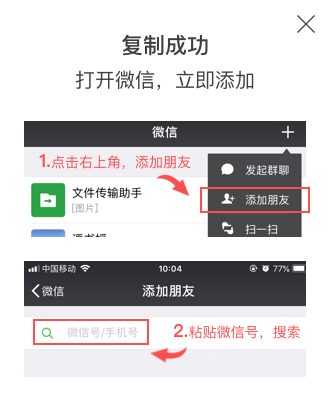<摘自中华男科学杂志>·综述·
精子形态与精子功能关系研究进展 厦门市妇幼保健院生殖中心沙艳伟
王瑞雪 综述; 刘睿智 审校
(吉林大学基础医学院细胞生物学教研室, 吉林省生殖医学研究所, 吉林长春130021)
摘要: 回顾近年来精子形态方面的相关文献,阐明精子形态分析在男性生育力评价中的重要价值。分析了精子形态分析技术的现状,阐述了各种精子功能试验与精子形态的关系。尽管精子形态分析技术尚待完善,但基于精子功能与精子形态间的密切关系,以及精子形态分析在辅助生殖领域中体现出的巨大预测价值,显示出精子形态分析的重要地位。
关键词: 精子形态; 男性不育 ; 辅助生殖
中图分类号: R321. 1; R698 + . 2 文献标识码: A 文章编号: 100923591 (2007) 0420348204①
Upda te of the Rela tion sh ip Between Sperm Morphology and Sperm Function
WANG Rui2xue, L IU Rui2zhi
Departm ent of Cell B iology, School of B asicM edical Science, J ilin University /J ilin Provincial Institute of Reproduc2
tiveM ed icine, Changchun, J ilin 130021, China
Correspondence to: L iu Rui2zhi, E2m ail: lrz420@126 . com
Abstract: This article reviews the recent literature on sperm morphology and attemp ts to illuminate the important value of sperm mor2
phology for evaluatingman fertility, with a survey of the p resent status of sperm morphology analysis techniques and the relationship be2
tween sperm morphology and sperm function tests. Sperm morphology analysis, although its techniques need to be further imp roved, is
p roved of great value for its significant correlation with sperm function and as a p redictor in assisted rep roduction. N a tl J Androl,
2007, 13 (4) : 3482351
Key words: sperm morphology; male infertility; assisted rep roduction
人们对精子形态认识始于17 世纪, Anton van
leeuwenhoek第1次发现了人类和动物精液中存在
大量精子。1916年, Cary第1个把精子畸形与男性
生育力联系起来。随着染色技术的发展和畸形精子
分类体系的形成,建立了精子形态学分析体系。研
究认为精子形态分析在 男性不育症 的诊断和治疗中
发挥重要的作用[ 1 ] 。尽管精子形态分析本身存在不
足,如:染色方法不同,分析标准各异,以及技术人员
的主观性,但是精子形态与精子功能的密切关系,以
及精子形态分析在辅助生殖中的预测价值,均显示
出精子形态分析在评价精子体内或体外受精( in
vitro fertilization, IVF)潜能中的重要地位。
1 精子形态分析技术
1. 1 精子涂片制备和染色方法 Gago等[ 2 ]研究表
明,固定和染色方法对精子头部大小有显著影响。
因此在涂片制备和染色过程中应将影响因素降到最
低,操作中要选择适当涂片制备和染色技术。液化精液直接涂片是常采用的方法,也可洗涤后精子涂
片,洗涤后精子涂片染色背景着色微弱,可提高计算机分析结果的准确性。已有研究表明这两种涂片制
备方法可影响精子形态分析结果[ 3 ] 。
目前,各实验室采用的染色方法有改良巴氏染
色、Diff2quik染色、肖尔染色等。然而,每种染色方
法都有其不足之处。Diff2quik染色可使涂片背景着
色较深,同时也可增大精子头部。改良巴氏染色为
WHO推荐方法,它可清晰染色精子各部,但是该方
法耗时较长。因此,各实验室应根据自己的偏爱或
是经验来选择适当的染色方法。资料显示, 约
33. 5%的实验室采用改良巴氏染色法,约22. 9%的
实验室采用Diff2quick染色法,约7. 6%的实验室采
用SpermMac法,另外约7. 6%的实验室在形态分析
过程中采用未经染色的涂片[ 4 ] 。Oral等[ 5 ]研究认
为,未染色的精液涂片仅适用于分析形态正常精子。
Menkveld等[ 3 ] 研究认为, 改良巴氏染色法和Diff2
quik染色法间形态分析结果无显著差异, Diff2quik
染色法更适用于计算机下形态分析。
1. 2 精子形态分析标准 目前尚未有统一的精子
形态分析标准。各实验室采用的标准主要有Elias2
son (1971) 、World Health Organization (WHO; 1980,
1987, 1992, 1999) 、Williams ( 1964) 、Tygerberg strict
criteria (Kruger, 1986, 1988; Menkveld, 1990) 、David
( 1975 ) 、Freund ( 1966 ) 、Fredricsson ( 1979 ) 和
Düsseldorf (1985 ) 。研究表明,分别约有40. 1%和
36. 4%的实验室采用Tygerberg严格标准和WHO标
准(1992) 。其他实验室采用的形态分析标准主要为
David和Dusseldorf标准,这两个标准亦多局限于法
国和德国。这两个标准未被普遍采用,可能是其过
于复杂和耗时较长[ 4 ] 。
不同的精子形态分析标准有不同的正常参考
值。根据Tygerberg严格标准,精子形态正常参考值
为14%。对于WHO标准,精子形态正常参考值随
着WHO手册的不断修订而发生了显著的变化,从
第1版的50%到第3版的30%。在第4版中未给
出正常参考值,仅说明当正常形态精子率< 15%时
体外受精率显著降低。目前,对于精子形态正常参
考值的界定存在着较大的争论。这是因为不同的研
究中所研究的生育和 不育 男性人群的差异,以及所
采用的统计方法的不同。
1. 3 精子形态分析方法 目前,人工方法是评价精
子形态的主要方法,但是该方法分析精子形态时,存
在主观性,且由于实验条件、检验技术水平及经验参
差不齐等原因可导致不同实验室甚至同一实验室内
部检测结果的误差。近年来随着计算机辅助精液分
析(Computer2Assisted Semen Analyzers, CASA)在精
子形态学分析中的应用,在一定程度上克服了人工
方法分析精子形态的弱点。但是, CASA在精子形态
分析中仍有问题尚待解决。其一, 技术人员需对
CASA分析的精子形态进行校正,故分析精子形态时
还不能完全去除分析者的主观性。其二,精子间染
色的变化可导致不能精确地识别和分析,从而导致
精子头部形态参数错误。另外,涂片的精子密度和
不均一性可影响计算机分析精子的能力。最后,不
同的染色方法也可能导致精子头部形态参数计算错
误[ 6 ] 。
2 精子形态与精子功能
2. 1 精子形态与精子运动 纤维鞘是包绕轴丝和
外周致密纤维的特殊细胞骨架结构,它决定精子鞭
毛主段长短。纤维鞘可影响精子鞭毛弯曲程度、运
动水平和鞭打形状。因此,纤维鞘异常可影响精子
运动,导致精子活力降低,生育力下降。Rawe等[ 7 ]
研究发现,严重弱精子症患者纤维鞘发育不良精子
比例显著增高。这类精子光镜下表现为尾部形态异
常,如尾部短、僵直、粗或不规则等。精子中段异常
可导致精子非前向运动或不活动。Piasecka等[ 8 ]研
究发现,弱精子症患者精液中, 50% ~70%的精子中
段异常或显著增粗,偶见胞质小滴存在。
精子在女性生殖道运行过程中,运动方式发生
显著变化,呈现剧烈而活跃运动,称为超激活运动。
它是精子获能的重要标志,也是精子穿透卵母细胞
进而与其融合的重要前提。超激活运动机制尚未明
晰,但已有研究表明,精子超激活运动与精子形态密
切相关。Green等[ 9 ]研究发现,超激活运动精子中
头部形态正常精子和小顶体精子比例显著增高,而
大头和圆头精子以及中段和尾部缺陷精子比例显著
降低。
2. 2 精子形态与精子2宫颈粘液穿透能力 宫颈粘
液可限制形态异常精子的穿透。Katz等[ 10 ]研究表
明,形态异常精子在宫颈粘液中泳动速度显著低于
形态正常精子,但是两者在鞭打参数上无显著差异。
与头部正常精子相比,头部异常精子可能会经受更
大的来自宫颈粘液的阻力。
2. 3 精子形态与顶体反应 顶体反应( acrosome re2
action, AR)是受体介导的细胞胞吐过程,包括精子
浆膜和顶体外膜融合、顶体酶释放。只有发生AR
的精子才能穿过透明带。研究表明,精子形态与AR
发生率有显著相关性。精子头部顶体大小可影响自
发性AR发生。与小顶体精子相比,大顶体和正常
顶体精子自发性AR 率增高[ 11 ] 。Liu 等[ 12 ]研究发
第4期 王瑞雪等 精子形态与精子功能关系研究进展· 94·3
现,透明带诱导AR与形态正常精子有显著正相关。
形态正常精子≥15%时,透明带诱导AR发生率显
著增高。
顶体内含大量蛋白水解酶,在精子穿越透明带
与卵母细胞融合过程中发挥重要作用。研究表明,
顶体酶活性与形态正常精子率呈显著正相关。一些
轻微形态异常的精子或轻度长形精子的顶体形态可
以是正常的,但是根据形态学标准,它们常被归为形
态异常。然而有研究认为,这类精子顶体酶活性可
正常并在受精过程中起重要作用[ 13 ] 。
2. 4 精子形态与精子2透明带结合 透明带对精子
形态具有选择作用。只有形态正常精子才能与透明
带结合。Liu等[ 14 ]研究发现,畸形精子症患者精子2
透明带结合率显著降低。另有研究发现,精子形态
与透明带结合精子数呈显著正相关。
顶体形态分析的引入对研究精子功能与精子形
态关系起了重要作用。研究表明,在精子2透明带结
合中,精子拥有正常顶体形态比正常形态本身更为
重要。形态正常精子与透明带结合比较紧;轻微异
常和轻微/中等程度长形的精子只要顶体形态正常,
也可与透明带结合,只是比正常稍微弱一点;严重畸
形和长形精子不能与透明带结合。此外,研究中也
发现,如果小卵形精子和梨形精子的顶体形态正常,
它们仍可以成功地与透明带结合[ 15 ] 。无论是体内
还是体外受精,均表明无顶体的圆头精子不能穿透
透明带,使卵母细胞受精[ 16 ] 。
3 精子形态与辅助生殖
辅助生殖技术已成为男性不育症治疗的重要手
段。大量研究显示精子形态分析结果可以为精子
IVF能力提供有效预测信息。在对45对夫妇的前
瞻性研究中, Kruger等[ 17 ]发现,严格形态正常精子
率< 4%和形态学指数< 30%的患者卵母细胞受精
率为7. 6% ,而严格形态正常精子率> 4%和形态学
指数> 30%的患者卵母细胞受精率至少为63. 9%。
Gunalp等[ 18 ]研究也表明,以5%作为精子形态临界
值可以在IVF中起较好的预测作用。精子形态分析
对宫腔内人工授精( intrauterine insemination, IU I)也
有重要预测价值。当精子制备后形态正常精子率<
30%时, IU I时活动精子数至少应在5 ×106 /ml,从而
在数量上补偿精子质量上缺陷[ 19 ] 。
顶体形态分析也在IVF结果预测中起重要作
用。研究表明,顶体指数是IVF受孕率最佳预测指
标。当顶体指数< 5%时, IVF2胚胎移植( IVF and
embryo transfer, IVF2ET)不受孕[ 20 ] 。也有研究持相
反意见。Soderlund等[ 21 ]研究表明,形态正常精子<
5%、顶体指数> 7%的精液样本行IVF后平均受精
率可达70%以上,但是顶体指数不能精确地预测受
精结果。
畸形精子染色体异常率较高。若将畸形精子注
入卵细胞内,可导致流产率增高,同时子代承担较高
的遗传风险。但Berkovitz等[ 22 ]研究表明,选用形态
异常精子进行卵细胞胞质内单精子注射( intracyto2
p lasmic sperm injection, ICSI) ,患者成功致孕。Dit2
trich等[ 23 ]认为,临界精子形态缺陷不能影响ICSI受
精过程。De Vos等[ 24 ]发现形态异常精子组卵母细
胞受精率、胚胎植入后妊娠率显著低于形态正常精
子组,但是两组间胚胎卵裂无显著差异,认为精子形
态可影响ICSI后受精结果,但是不影响胚胎发育。
Check等[ 25 ]研究认为异常精子形态不影响ICSI结
果。
4 小结
精子形态分析技术尚有待进一步完善。目前,
各实验室可通过建立精子形态分析的质量控制体系
来减小精子形态分析过程中由于染色方法、分析标
准、技术人员的主观性等所导致的结果差异,以保证
精子形态分析结果的稳定性和可重复性。精子形态
与精子功能密切相关,精子形态分析在预测体内或
体外受精结局上显示出重要价值。对于严重畸形精
子症患者,如圆头精子症患者,采用ICSI可为这些
患者提供生育可能。而未来需要解决的问题是:当
选用畸形精子进行ICSI,如何提高受精率及妊娠率
以及对子代有何影响。
参考文献
[ 1 ] Guzick DS, Overstreet JW, Factor2Litvak P, et al. Sperm mor2
phology, motility, and concentration in fertile and infertile men
[ J ]. N Engl J Med, 2001, 345 (19) : 138821393.
[ 2 ] Gago C, Perez2Sanchez F, Yeung CH, et al. Standardization of
samp ling and staining methods for the morphometric evaluation of
sperm heads in the Cynomolgusmonkey (Macaca fascicularis) u2
sing computer2assisted image analysis [ J ]. Int J Androl, 1998,
21 (3) : 1692176.
[ 3 ] Menkveld R, Lacquet FA, Kruger TF, et al. Effects of different
staining and washing p rocedures on the results of human sperm
morphology evaluation bymanual and computerised methods [ J ].
Andrologia, 1997, 29 (1) : 127.
[ 4 ] OmbeletW, Pollet H, Bosmans E, et al. Results of a question2
naire on sperm morphology assessment[ J ]. Hum Rep rod, 1997,
12 (5) : 101521020.
[ 5 ] Oral E, Yetis O, Elibol F, et al. Assessment of human sperm
morphology by strict criteria: comparison ofwet p reparation versus
stained with the modified Diff2Quik method [ J ]. Arch Androl,
2002, 48 (4) : 3072314.
[ 6 ] Graves JE, Higdon HL 3 rd, BooneWR, et al. Develop ing tech2
niques for determining sperm morphology in today’s andrology la2
· 05·3 中华男科学杂志2007年4月 第13卷
boratory [ J ]. J Assist Rep rod Genet, 2005, 22 (5) : 2192225.
[ 7 ] Rawe VY, Galaverna GD, Acosta AA, et al. Incidence of tail
structure distortions associated with dysp lasia of the fibrous sheath
in human spermatozoa [ J ]. Hum Rep rod, 2001, 16 ( 5 ) : 8792
886.
[ 8 ] PiaseckaM, Kawiak J. Sperm mitochondria of patients with nor2
mal sperm motility and with asthenozoospermia: morphological
and functional study [ J ]. Folia Histochem Cytobiol, 2003, 41
(3) : 1252139.
[ 9 ] Green S, Fishel S. Morphology comparison of individually select2
ed hyperactivated and non2hyperactivated human spermatozoa
[ J ]. Hum Rep rod, 1999, 14 (1) : 123230.
[ 10 ] Katz DF, Morales P, Samuels SJ, et al. Mechanisms of filtration
of morphologically abnormal human sperm by cervical mucus
[ J ]. Fertil Steril, 1990, 54 (3) : 5132516.
[ 11 ] Menkveld R, El2Garem Y, SchillWB, et al. Relationship be2
tween human sperm morphology and acrosomal function [ J ]. J
Assist Rep rod Genet, 2003, 20 (10) : 4322438.
[ 12 ] Liu DY, Stewart T, BakerHW. Normal range and variation of the
zona pellucida2induced acrosome reaction in fertilemen [ J ]. Fer2
til Steril, 2003, 80 (2) : 3842389.
[ 13 ] SzczygielM, Kurp iszM. Teratozoospermia and its effect on male
fertility potential [ J ]. Andrologia, 1999, 31 (2) : 63275.
[ 14 ] Liu de Y, Baker HW. Frequency of defective sperm2zona pelluci2
da interaction in severely teratozoospermic infertile men [ J ].
Hum Rep rod, 2003, 18 (4) : 8022807.
[ 15 ] Liu DY, Baker HW. Morphology of spermatozoa bound to the zo2
na pellucida of human oocytes that failed to fertilize in vitro [ J ].
J Rep rod Fertil, 1992, 94 (1) : 71284.
[ 16 ] Bourne H, Liu DY, Clarke GN, et al. Normal fertilization and
embryo development by intracytop lasmtc sperm injection of round
headed acro someless sperm [ J ]. Fertil Steril, 1995, 63 ( 6 ) :
132921332.
[ 17 ] Kruger TF, Acosta AA, Simmons KF, et al. Predictive value of
abnormal sperm morphology in in vitro fertilization [ J ]. Fertil
Steril, 1988, 49 (1) : 1122117.
[ 18 ] Gunalp S, Onculoglu C, Gurgan T, et al. A study of semen pa2
rameterswith emphasis on sperm morphology in a fertile popula2
tion: an attemp t to develop clinical thresholds [ J ]. Hum Re2
p rod, 2001, 16 (1) : 1102114.
[ 19 ] Wainer R, AlbertM, Dorion A, et al. Influence of the number of
motile spermatozoa inseminated and of their morphology on the
success of intrauterine insemination [ J ]. Hum Rep rod, 2004, 19
(9) : 206022065.
[ 20 ] Rhemrev JP, Menkveld R, Roseboom TJ, et al. The acrosome in2
dex, radical buffer capacity and number of isolated p rogressively
motile spermatozoa p redict IVF results [ J ]. Hum Rep rod, 2001,
16 (9) : 188521892.
[ 21 ] Soderlund B, Lundin K. Acrosome index is not an absolute p re2
dictor of the outcome following conventional in vitro fertilization
and intracytop lasmic sperm injection [ J ]. J Assist Rep rod Genet,
2001, 18 (9) : 4832489.
[ 22 ] Berkovitz A, Eltes F, Yaari S, et al. Themorphological normalcy
of the sperm nucleus and p regnancy rate of intracytop lasmic injec2
tion with morphologically selected sperm [ J ]. Hum Rep rod,
2005, 20 (1) : 1852190.
[ 23 ] Dittrich R, Maltaris T, Dragonas C, et al. Individual assessment
of sperm morphology of single spermatozoa used for intracytop las2
mic sperm injection [ J ]. Andrologia, 2005, 37 (1) : 53256.
[ 24 ] De VosA, Van De Velde H, JorisH, et al. Influence of individ2
ual sperm morphology on fertilization, embryo morphology, and
p regnancy outcome of intracytop lasmic sperm injection[ J ]. Fertil
Steril, 2003, 79 (1) : 42248.
[ 25 ] CheckML, Bollendorf A, Check JH, et al. Reevaluation of the
clinical importance of evaluating sperm morphology using strict
criteria [ J ]. Arch Androl, 2002, 48 (1) : 123.
(陆金春 编发)
精子形态与精子功能关系研究进展
2010-05-12 21:19 发布
上一篇: 白细胞精子症研究进展
下一篇: 精浆抗精子抗体检测指证以及临床处理
医生其他文章
























 打开APP
打开APP